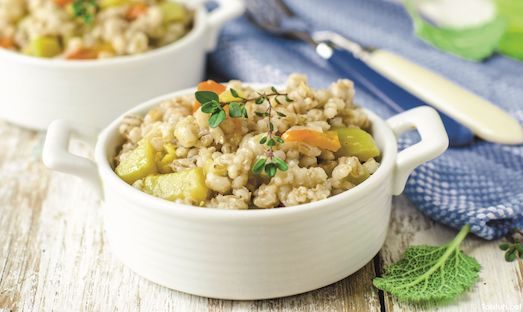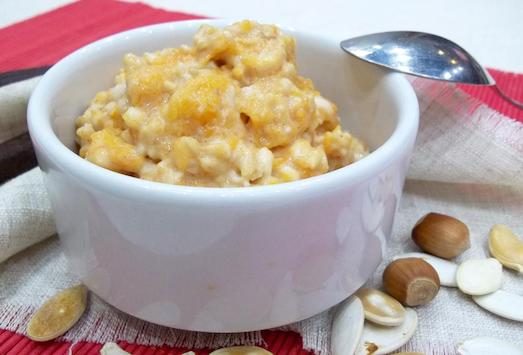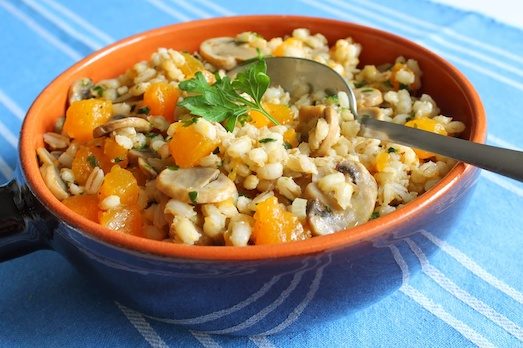How to cook barley correctly and tasty?
Pearl barley is usually called barley grains, cleaned from bran. Porridge from this cereal is easy to prepare, has good taste, and is able to quickly saturate the body.
Preparation
Cooking pearl barley porridge is a more time-consuming process than cooking oatmeal. There is a simple explanation for this. Oatmeal is usually prepared using oatmeal that has been pre-ground or minced and therefore absorbs liquid more easily, which affects the cooking speed.
So, how to cook barley correctly and how much? To prepare pearl barley porridge, you need to perform the following sequence of actions. First, rinse the barley in cold water to remove dust particles. Pour water into a medium-sized saucepan and bring it to a boil. Then pearl barley is added. In this case, the proportion “water – cereal” should be “3: 1”. The porridge is brought to a boil again. Now you need to keep the heat to a minimum and cover the pot. Continue to cook the porridge for about 45 minutes: the barley should soften and the liquid should be absorbed.
Storing boiled barley
Raw barley can be stored for up to six months in a sealed container. Cooked barley porridge can be stored in the refrigerator in an airtight container for no more than one week. You can also divide the porridge into portions and place them in the freezer. This storage option for boiled barley allows it to retain its nutritional properties for a much longer period.

If you want to prepare barley for the future, you only need to cook it for 30 minutes, as it will absorb a small amount of additional liquid during storage. To prepare one standard serving of barley, you need to take about 25 g of raw barley.
To make porridge using partially cooked barley, it is sufficient to proceed in the same way as with oats, except that you need to use less liquid. If you are using frozen portions, thaw them before cooking.
Barley oat
Ingredients:
- pearl barley, pre-cooked (100 g);
- low fat milk (100 ml);
- Whey protein, odorless (25 g, which roughly corresponds to 1 medium spoon);
- oatmeal (1 spoon – 15 g).
This is a recipe for a high protein porridge made from pearl barley and oats. Pearl barley should be pre-cooked, but not completely (about 30 minutes). It can then be refrigerated for later use.
Place the ingredients in a saucepan, then mix thoroughly. Simmer the mixture over low heat and stirring until the desired consistency is obtained. You can add sweetener or honey.
The nutritional value of one serving of such porridge is 331.8 kcal.
Nutrient Content:
- proteins – 28.3 g;
- carbohydrates – 43.8 g;
- starch – 8.5 g;
- sugar – 6.8 g;
- total fats – 4.8 g;
- saturated fat – 1.4 g;
- polyunsaturated fats – 0.2 g;
- monounsaturated fats – 0.1 g;
- trans fat – 0 g;
- omega-3 – 21 mg;
- omega-6 – 193 mg;
- fiber – 5.3 g;
- cholesterol – 0.5 mg;
- sodium – 41.7 mg.
With cinnamon and maple syrup
Ingredients:
- unsweetened almond milk (200 ml);
- pearl barley, raw (50 g);
- whey protein concentrate, odorless (1 medium spoon – 25 g);
- maple syrup (1 tablespoon – 20 g);
- cinnamon (1 teaspoon – 2 g).
This recipe uses whole pearl barley rather than ground barley flour. This allows you to get a better structure of the final product and maintain a low glycemic index of the grain.
Cinnamon goes well with maple syrup. If you don’t have real maple syrup on hand, you can use honey, agave nectar, or plain sugar syrup as a substitute.
For this recipe, it is advisable to take partially cooked barley. If you don’t have one, you will need to boil the barley grains for 30 minutes before using them in this recipe. All ingredients must be put in a saucepan and simmer the resulting mixture until the desired consistency is obtained.
The nutritional value of one serving is 383.3 kcal.
Nutrient Content:
- proteins – 25.4 g;
- carbohydrates – 59.7 g;
- starch – 0 g;
- sugar – 14 g;
- total fats – 4.8 g;
- saturated fat – 0.2 g;
- polyunsaturated fats – 0 g;
- monounsaturated fat – 0 g;
- trans fat – 0 g;
- omega-3 – 0 mg;
- omega-6 – 20.2 mg;
- fiber – 8.5 g;
- cholesterol – 1.4 mg;
- sodium – 2.1 mg.
With peanut butter
Ingredients:
- low fat milk (150 ml);
- pearl barley, cooked (100 g);
- whey protein concentrate, odorless (1 medium spoon – 25 g);
- peanut butter, natural (1 teaspoon – 15 g);
- oatmeal (1 spoon – 15 g).
Pour oatmeal into a saucepan and cover with milk. Begin to warm up the mixture slightly. Barley is prepared in advance, as in the previous recipes. Add the cooked pearl barley along with the peanut butter to the mixture and stir gently until the desired consistency is obtained. Sweetener can be added if desired.

The nutritional value of one serving is 504.1 kcal.
Nutrient Content:
- proteins – 34.4 g;
- carbohydrates – 55.5 g;
- starch – 9.2 g;
- sugar – 14.3 g;
- total fats – 16 g;
- saturated fat – 3.7 g;
- polyunsaturated fats – 2.3 g;
- monounsaturated fats – 3.7 g;
- trans fat – 0 g;
- omega-3 – 32.7 mg;
- omega-6 – 2305.2 mg;
- fiber – 6.7 g;
- cholesterol – 0.5 mg;
- sodium – 110.6 mg.
Nutritional quality
Barley porridge, included in the diet, along with oatmeal, helps to maintain the normal functioning of the digestive tract. Whole grains (such as barley and oatmeal) are high in nutrients and fiber, as well as high in calories.
But it is worth noting that pearl barley porridge contains fewer calories than oatmeal. In addition, barley contains about a third of the fat found in oats and also contains more fiber. This makes it a more suitable grain if limiting the amount of calories you eat is part of your nutritional strategy.

In addition, the high fiber content in barley helps to increase intestinal motility, accelerates the feeling of satiety by absorbing excess fluid in the intestine, promotes the development of a favorable microflora in the colon and, as a result, helps to improve well-being.
The protein content of barley is lower than that of oats. This fact may be relevant for those who do not eat meat and rely on plant-based foods to meet their protein needs. Those who consume meat products will not look at cereals as a source of protein, so this fact does not play a decisive role for them.